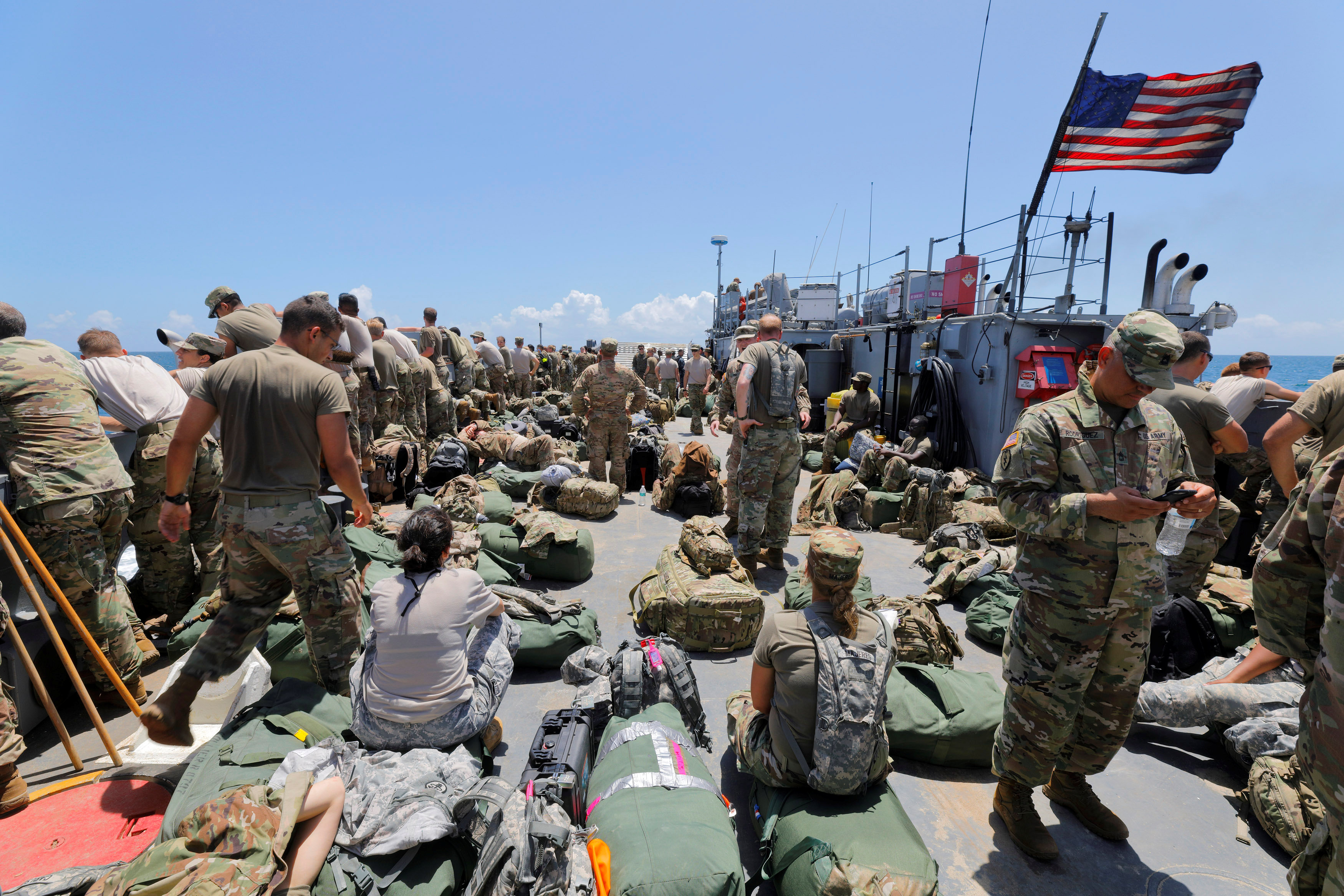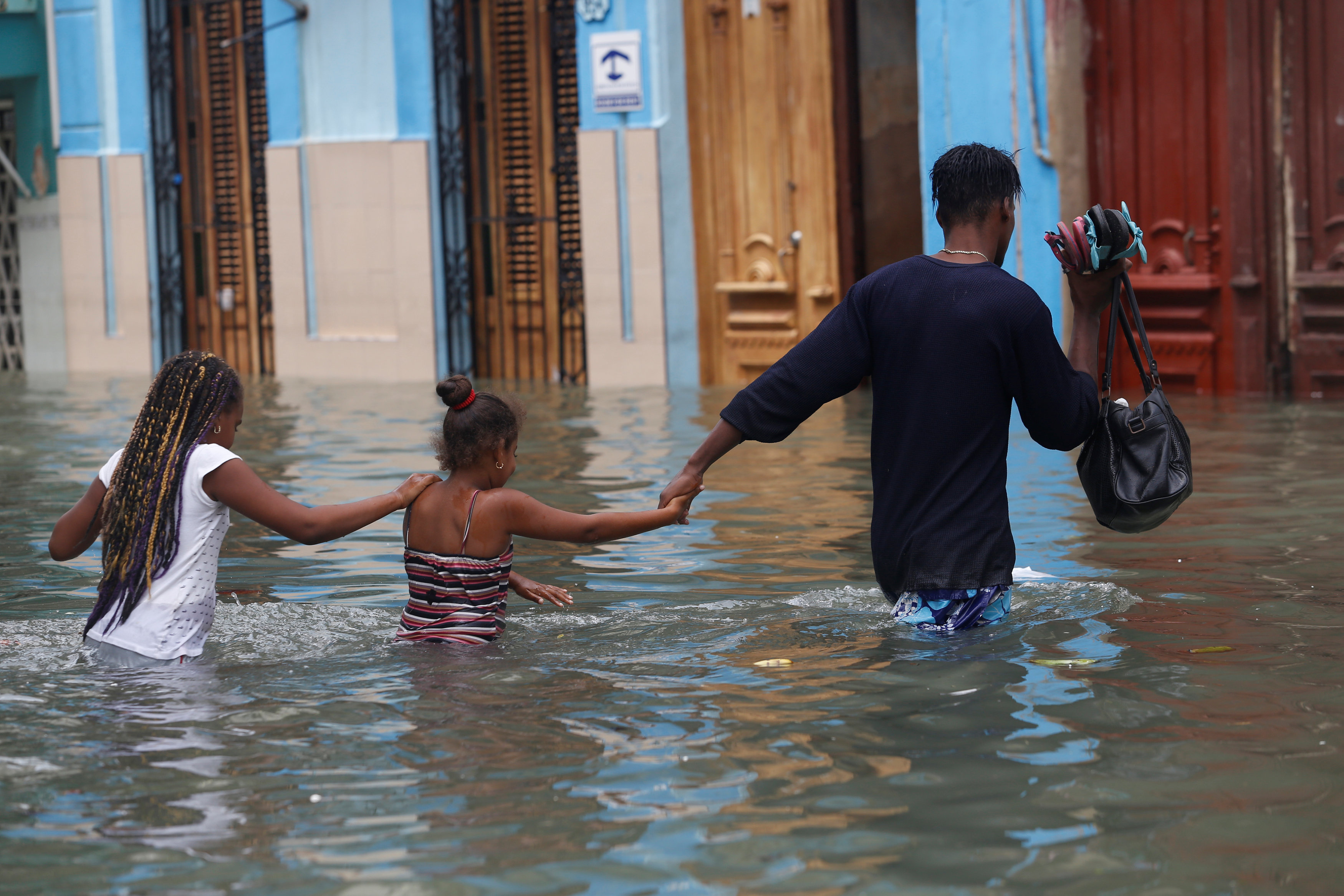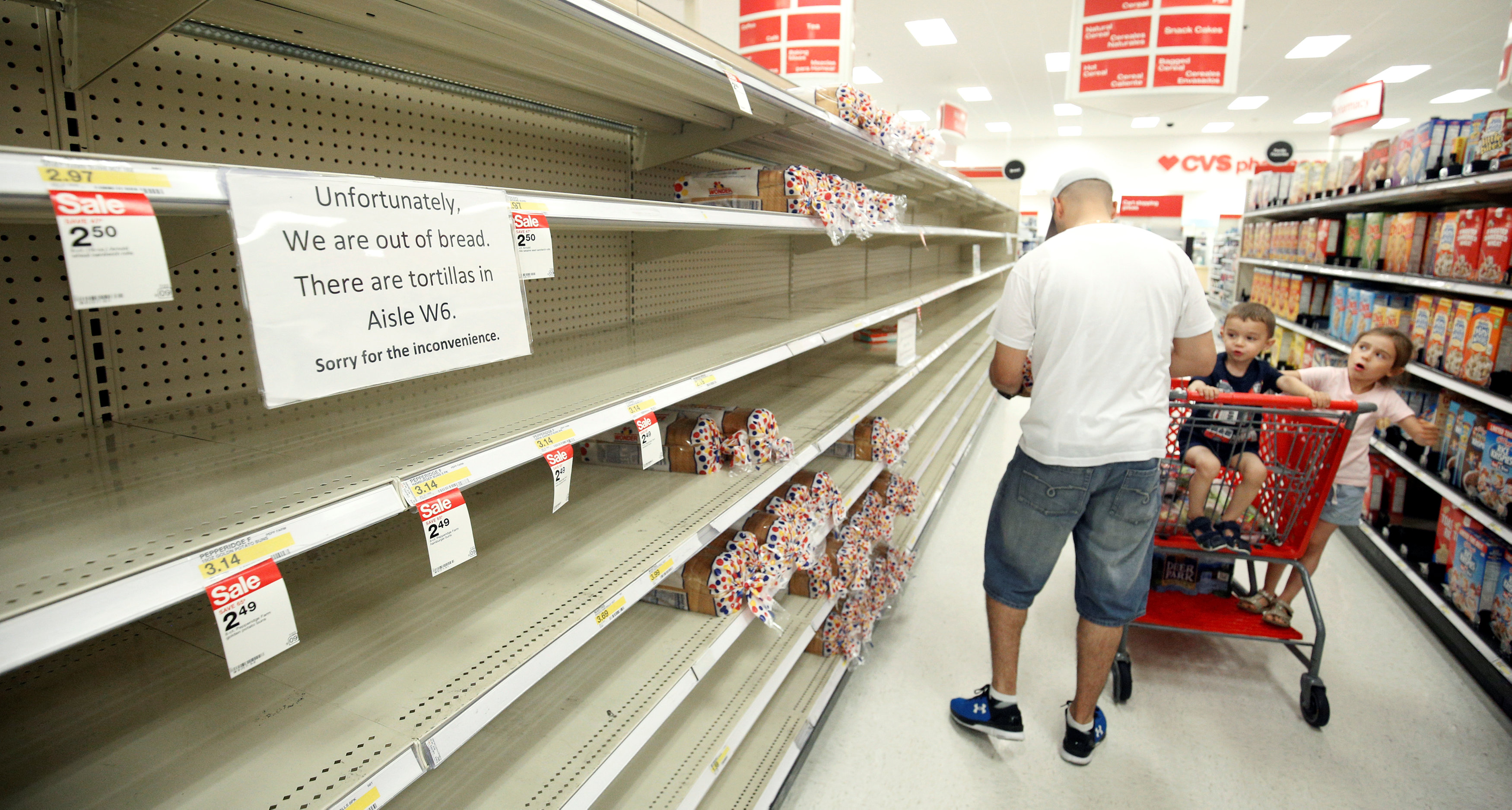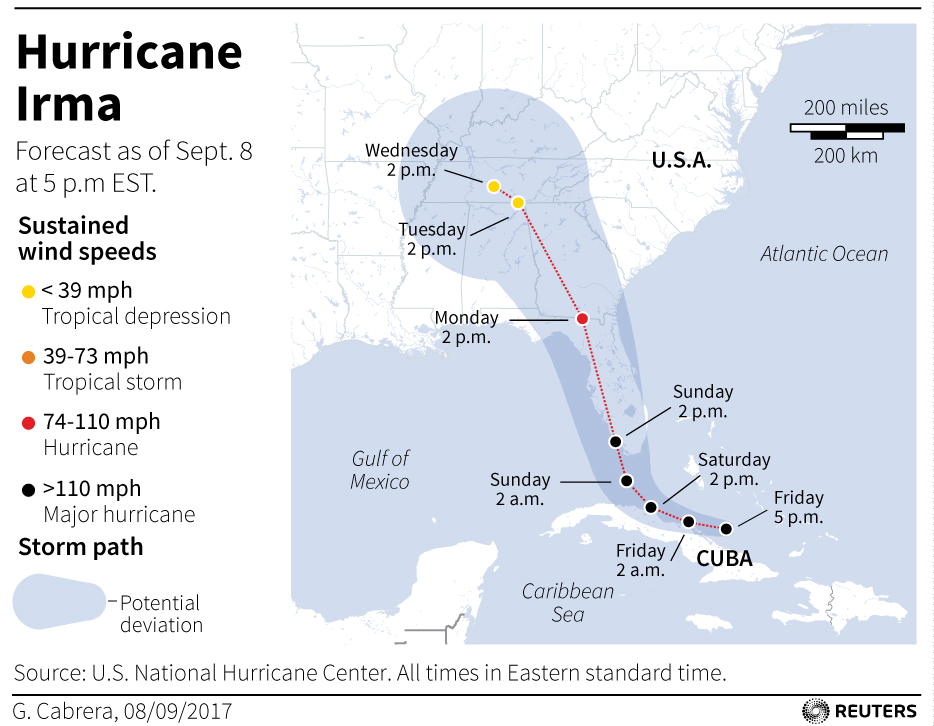
By Sarah Marsh
REMEDIOS, Cuba (Reuters) – Hurricane Irma pounded Cuba’s northern coast on Saturday and barreled toward Florida as authorities scrambled to complete an unprecedented evacuation of millions of residents hours before the storm would engulf the state.
The outer band of Irma, which has killed at least 22 people in the Caribbean, was already lashing South Florida with tropical storm-force winds and left nearly 25,000 people without power, Governor Rick Scott said.
The brunt of the hurricane, one of the fiercest Atlantic storms in a century, is due to arrive in Florida early Sunday.
Irma could inflict major damage on the fourth-largest U.S. state by population, which is braced for winds well in excess of 100 miles per hour and a huge storm surge that could trigger coastal flooding.
“This is a deadly storm and our state has never seen anything like it,” Scott said at a Saturday morning news conference.
Irma, located about 225 miles (365 km) south of Miami on Saturday morning, still ranked as a Category 5 storm when it crashed into Cuba in the early hours of Saturday. It weakened to a Category 3 as it tore along the island’s northern coastline, downing power lines, bending palm trees and sending huge waves crashing over sea walls.
Maximum sustained winds dipped to around 130 miles per hour (215 km per hour) by 8 a.m. (1200 GMT) on Saturday, the U.S. National Hurricane Center (NHC) said.
But Irma will regain strength as it moves over the warm open water as it approaches Florida, according to the NHS, which expects the storm to arrive in the Keys, an archipelago off the peninsula’s southern tip, on Sunday morning.
On Florida’s West Coast, a long line of people in Estero, north of Naples, lined up to enter an arena that officials converted into an evacuation shelter, one of hundreds that have opened up across the state.
“We got the house all buttoned up,” said Montgomery Campbell, 82, as he stood in line.
Luise Campana Read was one of those who chose to ignore warnings and stay in her home. She said by phone she planned to ride out the storm in her beachfront condo in Fort Lauderdale, with her elderly mother and other family members.
“With a 97-year-old, there was no way I was going to have her sleep on a cot or a blow-up mattress” in a shelter, she said.
The destruction along Cuba’s north central coast was similar to that seen on other Caribbean islands over the last week as Irma plowed into Ciego de Avila province around midnight.
State media said it was the first time the eye of a Category 5 storm had made landfall since 1932. In the days before Irma struck, the island’s Communist government evacuated tens of thousands of foreign tourists from resorts on the northern coast.
In Ciego de Avila province, Irma was forecast to generate waves of up to 7 meters (23 feet), with flooding expected as far west as the capital Havana, authorities said on Saturday.
Antonia Navarro, 56, a resident of the northern Cuban port town of Nuevitas in Camaguey, said a local ice cream factory was destroyed and glass windows at a hospital were blown out.
“We are praying to God and the Virgin of Charity that nothing grave happens to the people of Florida, and in particular Miami,” said Navarro, an officer worker. “We have to pray a lot for our relatives who live there.”
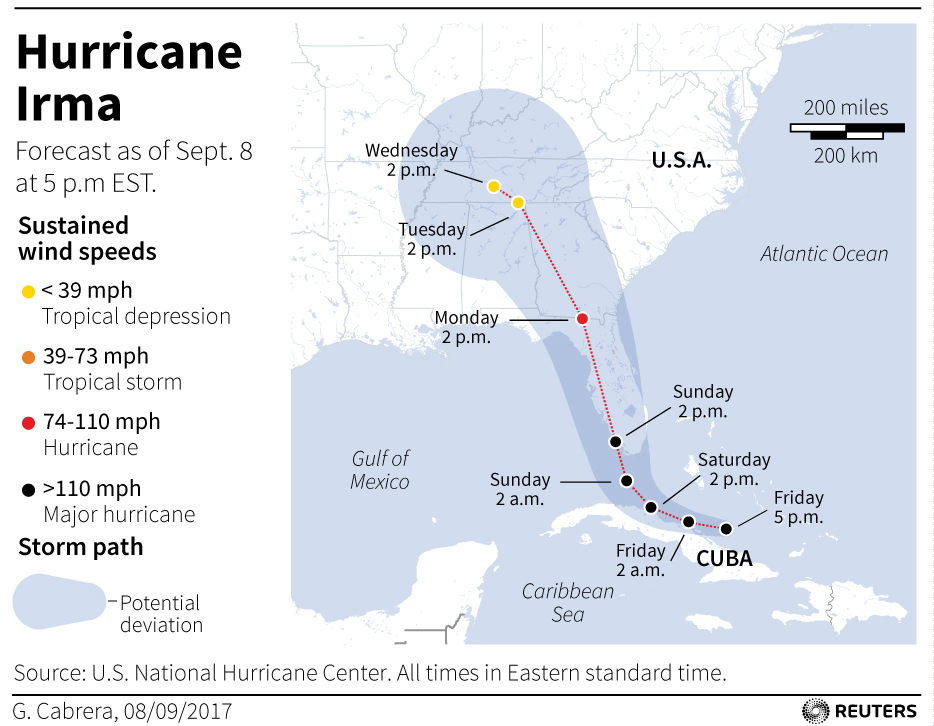
“RUNNING OUT OF TIME”
With the storm barreling toward the United States, officials in Florida raced to overcome clogged highways, gasoline shortages and move elderly residents to safety.
A total of 5.6 million people, or 25 percent of the state’s population, were ordered to evacuate Florida, according to the Florida Division of Emergency Management.
The United States has been hit by only three Category 5 storms since 1851, and Irma is far larger than the last one in 1992, Hurricane Andrew, according to the Federal Emergency Management Agency (FEMA).
On Wall Street, the S&P 500 ended slightly lower as investors braced for potential damage and massive insurance claims from Irma. Many economists are predicting that third-quarter gross domestic product will take a hit due to the hurricanes.
President Donald Trump said in a videotaped statement that Irma was “a storm of absolutely historic destructive potential” and called on people to heed recommendations from government officials and law enforcement. In Palm Beach, Trump’s waterfront Mar-a-Lago estate was ordered evacuated.
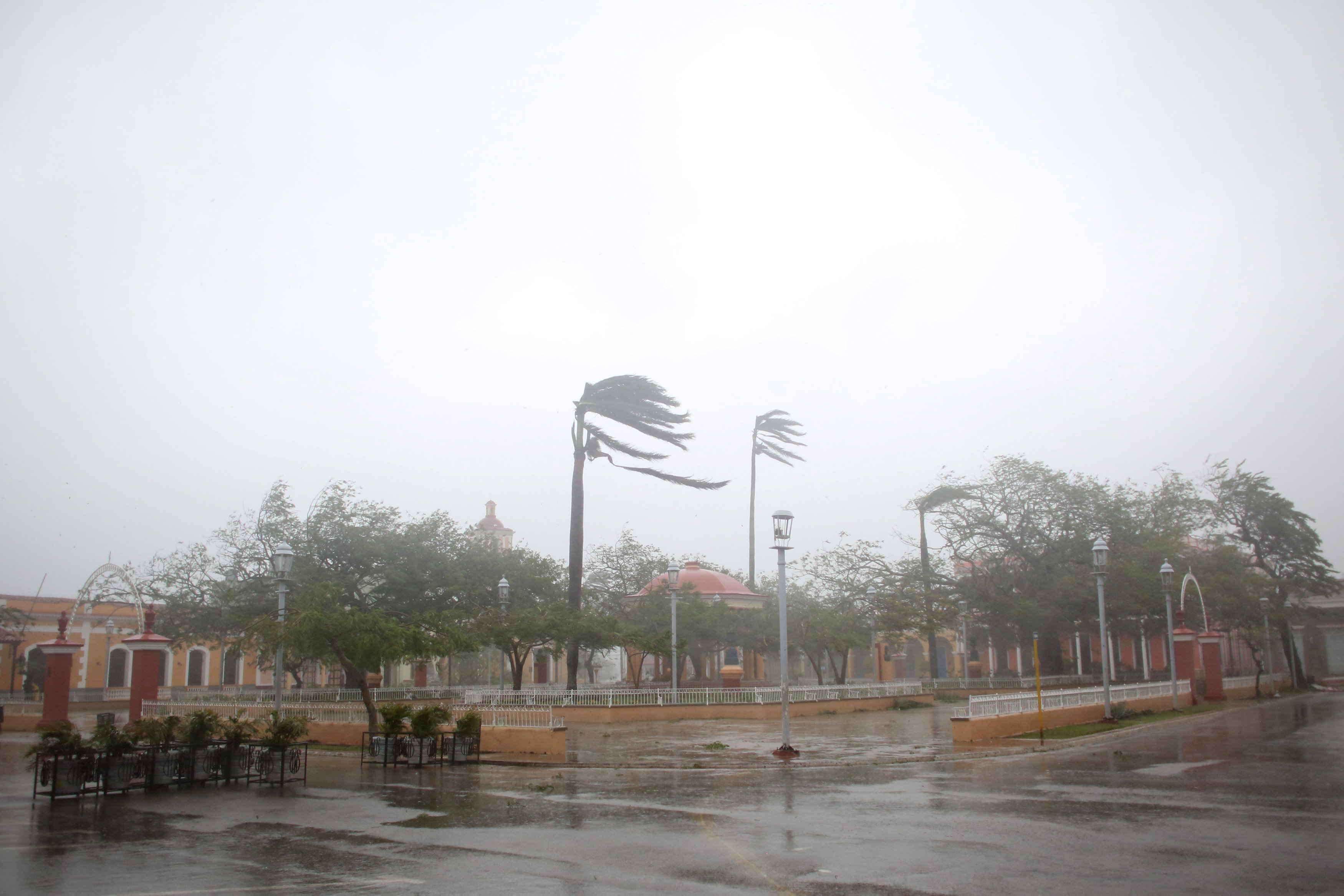
Trees sway in the wind at the main square as Hurricane Irma passes by Remedios, Cuba September 8, 2017. REUTERS/Alexandre Meneghini
MANDATORY EVACUATIONS, GASOLINE SHORTAGES
Irma was set to hit the United States two weeks after Hurricane Harvey, a Category 4 storm, struck Texas, killing about 60 people and causing property damage estimated at up to $180 billion in Texas and Louisiana. Officials were preparing a massive response, the head of FEMA said.
About 9 million people in Florida may lose power, some for weeks, said Florida Power & Light Co, which serves almost half of the state’s 20.6 million residents.
Amid the exodus, nearly one-third of all gas stations in Florida’s metropolitan areas were out of gasoline, with scattered outages in Georgia, North Carolina and South Carolina, according to Gasbuddy.com, a retail fuel price tracking service.
Mandatory evacuations on Georgia’s Atlantic coast and some of South Carolina’s barrier islands were due to begin on Saturday. Virginia and Alabama were under states of emergency.
The governors of North and South Carolina warned residents to remain on guard even as the storm took a more westward track, saying their states still could experience severe weather, including heavy rain and flash flooding, early next week.
As it roared in from the east, Irma ravaged small islands in the northeastern Caribbean, including Barbuda, St. Martin and the British and U.S. Virgin Islands, flattening homes and hospitals and ripping down trees.
Irma is seen costing at least 1.2 billion euros ($1.4 billion) in Saint Martin and Saint Barthelemy, a French public reinsurance body said on Saturday.
But even as they came to grips with the destruction, residents of the islands faced the threat of another major storm, Hurricane Jose.
Jose, expected to reach the northeastern Caribbean on Saturday, is an extremely dangerous storm nearing Category 5 status, with winds of up to 150 mph (240 kph), the NHC said.
(For a graphic on how Irma compares to other major hurricanes, click http://tmsnrt.rs/2gTxfqJ)
(Additional reporting by Marc Frank in Havana, Makini Brice in Cap-Haitien, Haiti,; Delana Isles in Providenciales, Turks and Caicos, Bernie Woodall, Robin Respaut and Brian Thevenot in Ft. Lauderdale, Florida, Ben Gruber and Andy Sullivan in Miami, Bate Felix, Richard Lough and Dominique Vidalon in Paris, Toby Sterling in Amsterdam and Neil Hartnell in Nassau, Bahamas; Writing by Alex Dobuzinskis; Editing by Helen Popper, Dale Hudson and Diane Craft)


